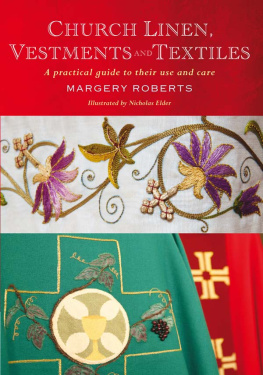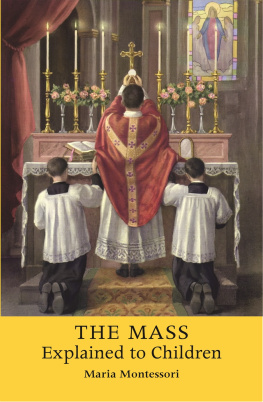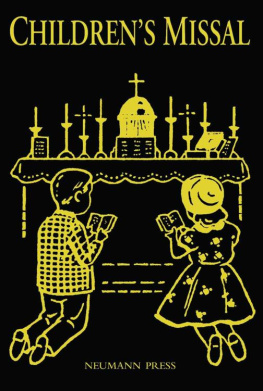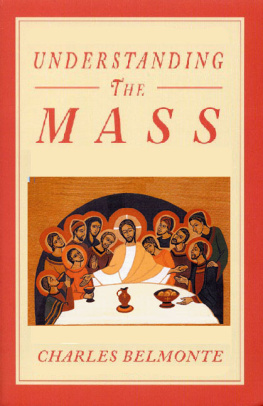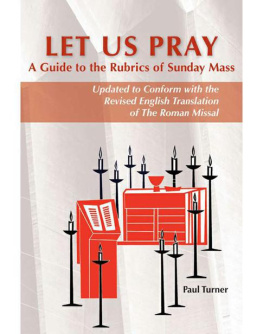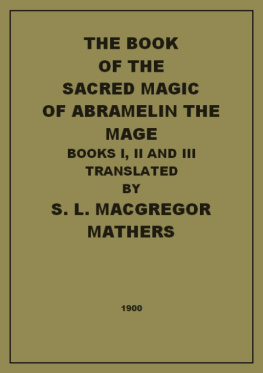VESTMENTS
FOR ALL SEASONS

VESTMENTS
FOR ALL SEASONS

BARBARA DEE BAUMGARTEN

For St. Claire of Assisi,
my brothers and sisters of the
Society of St. Francis, Third Order,
and for the women at the
Drucilla Balaba Training School,
Kabale, Uganda
Copyright 2002 Barbara Dee Baumgarten
Morehouse Publishing, 4775 Linglestown Road, Harrisburg, PA 1712 Morehouse Publishing, 445 Fifth Avenue, New York, NY 10016
Morehouse Publishing is an imprint of Church Publishing Incorporated.
All rights reserved. No part of this book may be reproduced, stored in a retrieval system, or transmitted in any form or by any means, electronic or mechanical, including photocopying, recording, or otherwise, without the written permission of the publisher.
Unless otherwise noted the Scripture quotations are from the New Revised Standard Version of the Bible, copyright 1989 by the Division of Christian Education of the National Council of the Churches of Christ in the United States of America. Used by permission. All rights reserved.
The Scripture quotation from the New King James Version (NKJV), copyright 1979, 1980 and 1982 Thomas Nelson Publishers, Inc., Nashville, TN.
The drawing at the beginning of is based on an excellent sketch of the early Christian chasuble by Anastasia Dolby in her book Church Vetsments, Their Origin, Use and Ornament copyright 1868 by Chapman and Hall Publishers, London, England.
Design by Corey Kent
Photography by Karen Weyer
Library of Congress Cataloging-in-Publication Data
Baumgarten, Barbara Dee Bennett, 1955
Vestments for all seasons / Barbara Dee Baumgarten
p. cm.
Includes bibliographical references and index
ISBN 978-0-8192-1866-7
1. Church vestments. I. Title
BV167.B38 2002
247dc27
2002006722
Printed in the United Satates of America
08 09 10 11 5 4 3 2
C ONTENTS

P REFACE

How can [I] thank God enough for you in return for all the joy that [I] feel before God because of you?
1 Thessalonians 3:9
Deep in history, the church fathers wore simple, flowing garments that reflected the style of their day. Over 2,000 years later, church vestments have retained their classic shapes, but they can be far more lavish. Frequently they are embellished with elaborate appliqu, embroidery, and quilting. Because they are often so ornately adorned, and so steeped in the symbolism and history of the church, vestments have acquired a mystique. Even those who sew well can feel too intimidated to make them. But the joy and satisfaction of creating vestments need not be limited to an elite few. Vestments, like other elements of worship, are best when they are made as gifts by the people of God.
To encourage the art of vestment making, this book covers the history, unique qualities, and spirituality associated with these liturgical garments and altar cloths, as well as elements of design. A glossary of church attire in the second chapter lists various vestments and their uses. The book includes patterns and methods for making vestments, as well as tips on contemporary methods for traditional adornment: appliqu, painting, and piecing. I hope these instructions reduce the fear factor and stimulate the hearts and imaginations of all those attracted to vestment design and construction.
Making a vestment involves two steps: adorning or preparing the fabric, then constructing the garment. The patterns in this book are for those with a novice-to-intermediate skill level. The garment construction is uncomplicated; the challenge lies in the adornment. What most of the projects require is persistence. Vestment making is not difficult, but it does require many steps to complete. To ensure that your projects are a success, allow plenty of time to follow the basic steps. Most of the projects lend themselves well to a group effort, making little work for many hands.
N OTES ON U SING T HIS B OOK
Fabric requirements and particular notions are found at the beginning of each chapter. Staple notions are listed at the beginning of .
All illustrations are numbered according to chapter number and the order they appear within the chapter. For example, . The letters used include (in alphabetical order):
BS Bias Strips
B Binding in ; Burse thereafter
C Cording in , Chasuble thereafter
DT Dalmatic/Tunicle
D Deacons stole
M Maniple
P Paraments
PS Pocket Stole
S Stole
V Chalice Veil
I am indebted and grateful to the church for its endurance, its encouragement, and its creativity through the years; to St. Clare of Assisi, who profoundly understood the bond between prayer and handwork; to Phyllis Stevens, who provided the pattern for a cowled chasuble and taught me how to make it; to Ed Miller and Ann Graham, who contributed fabric woven by the late Virginia Miller, an expert weaver; to the Reverend Gale Morris, who made the Easter rainbow chasuble; to Leslie Carson, who led the Sunday school that made the Easter stole; to Pattiann Bennett, Clara Hazelwood, and Cynthia Davis, whose insightful and adept reading of my manuscript was indispensable; to my editor at Morehouse Publishing, Debra Farrington, whose support and patience sustained the writing of this book; to Nancy Fitzgerald and Christine Finnegan for their expert supervision of the text and multiple illustrations; to Corey Kent, for the lovely book design; to my photographer, Karen Weyer, and her assistant, Hector Arbour, for their fine skill and flexibility; to Ronda Scullen, typesetter extraordinaire; and to my family, whose love and humor endure the vicissitudes of living with a writer-artist.
PART I
PREPARATION


1.
S EEKING U NIFORMITY AND D ISTINCTION : A H ISTORICAL O VERVIEW

The necessities of life are water, bread and clothing, and also a house to assure privacy.
Sirach 29:21
Shelter, food, and clothing are the necessities of human life. The Christian Eucharistic celebration incorporates and sanctifies these essentials as a sign to us that life in Christ is not peripheral to daily life but basic to it. Christians gather in a shelter designated sacred to share a simple meal of bread and wine. The ministers of the meal don particular garments, special to the occasion. While Jesus himself determined the food for the liturgical riteand the shelter or church was instituted quickly thereafterthe idea of special liturgical clothing came much later. The garments designated for the ceremonies of the church are called vestments. Ministers wear them to celebrate the Eucharist and other sacramental rites, for the Offices of prayer, and for other public services.


